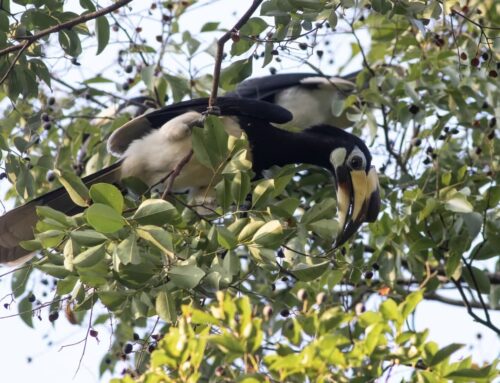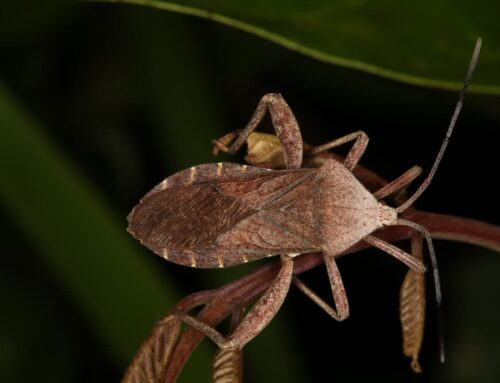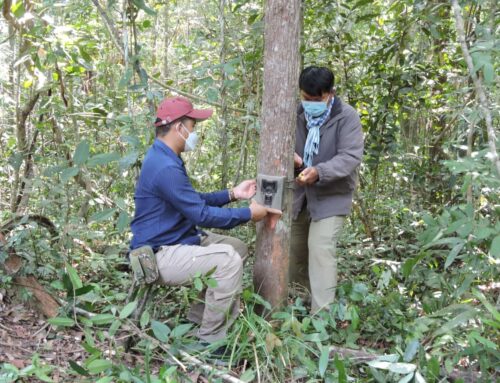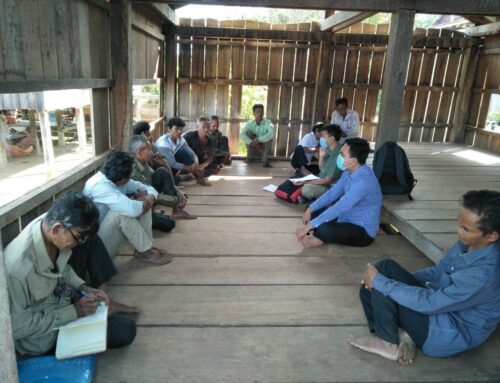Under the wildlife assessment for Tumring REDD+ Project, a survey was conducted to collect information of herpetofauna species in the targeted community forest areas specifically focused on richness and abundance. These studied community forests still remain relatively good habitat of semi-evergreen forest and many of dipterocarp and resin tree species are still widely distributes across sites. The opportunistic searches for amphibians and reptiles and pitfall traps were applied to collect the data. Captured species were photographed and release back unharmed. Aside from actual field survey, community interviews were conducted to collect a certain key herpetofauna species information in order to identify presence of key conspicuous species especially for globally conservation significant. The interviews also helped to determine the potential threats to the herpetofauna in the targeted areas.
Result from the survey indicates that a total of 49 herpetofauna species were recorded from all survey sites. Among these, 36 species (16 amphibian and 20 reptile species) were recorded from the actual field search while other 13 key conspicuous reptile species were recorded from the local people interviews. The herpetofauna species of the high conservation value were only recorded through interviews and the species recorded from the field survey mostly listed as the least concern by the IUCN Red List. The most detected amphibian species is M. fissipes and E. macularia for reptiles. In term of diversity scores, Prey O’Kranhak identified to the site of highest diversity for herpetofauna species and this area was observed to contains more flowing streams and puddles than other studied sites. This good condition supports more species to keep active even in dry season. The lowest diversity score is at Prey Ang Taen, which the forest in this area was observed to be more degraded and isolate from others. Illegal logging and wildlife hunting were identified as the main threats at these community forests. We’d recommend to conserve and restore these community forests, preserve swamps and streams, and tackle the illegal logging and wildlife hunting in these community forests.
More information:
http://tumringredd.org/wp-content/uploads/2022/03/Tumring-REDD-Project-Herpetology-Report-CF-Preylang.pdf








Leave A Comment